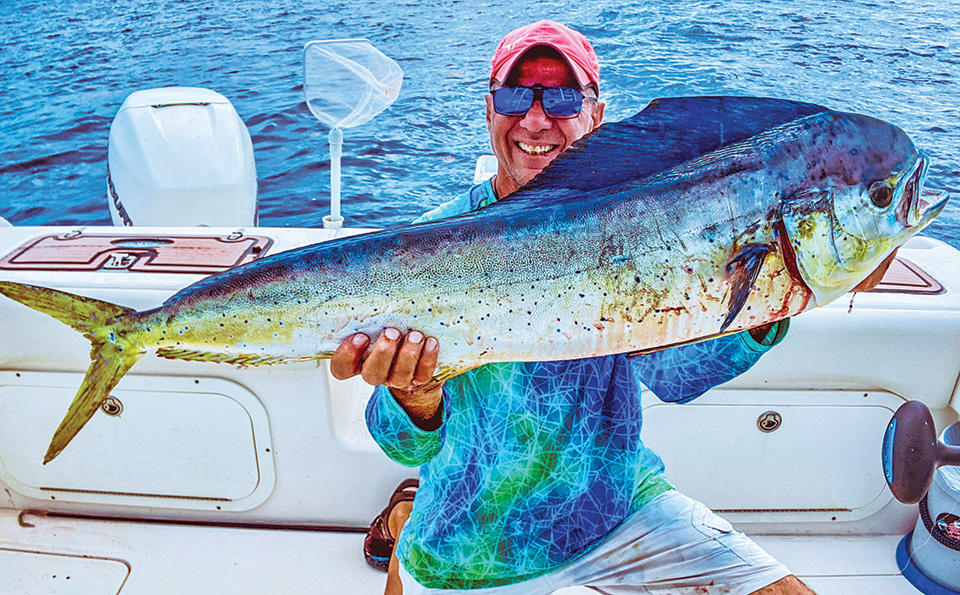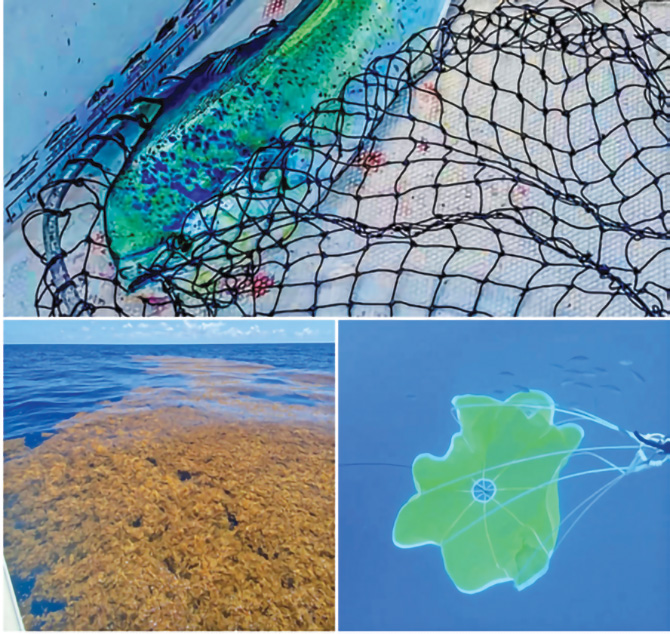
By Mark Ambert
There’s magic in the way a mahi mahi lights up when it crashes a live bait. Electric greens, yellows, and blues; all pulsing with life, like the ocean itself. If you’ve ever tangled with one, you know: it’s not just a fish, it’s a full-blown spectacle. And there’s no more thrilling way to target these pelagic acrobats than with live bait.
Live bait fishing for mahi is less about brute force and more about !nesse. It’s knowing when to drift and when to troll, when to freeline andvwhen to pitch. You’re not just dropping bait in the water, you’re offering an invitation and if you do it right, the ocean answers in brilliant chaos.

Let’s start with the basics. Find the frigate birds. Look for flying fish and blue water. Find that patch of weed holding bait. Watch the water.
The mahi are rarely where you want them to be, but always where they ought to be. Current edges, floating debris, weed lines, these aren’t just features; they’re dinner tables. Approach quietly. Keep your eyes sharp. That flicker of green behind the weeds? It’s not a mirage. That’s your quarry.

Live bait selection matters. Pilchards, cigar minnows, finger mullet; they all have their place.But few offerings rival a lively sardine or goggle eye when it comes to pulling big mahi out of their hideouts. Hook your bait through the nose or shoulder to let it swim true, and with a hook sized appropriately to the bait, not the quarry. Use as light a leader as the situation allows, fluorocarbon in the 30 to 50-pound range is the sweet spot.
Drifting is deadly when conditions are right. Kill the engines and let the bait do the talking. You’ll often see the mahi before they hit darting from the shadows like a comet to inhale the offering. When they do, don’t rush. Let them eat. Reel down, come tight, and hold on. The !rst run is a blur, the jumps are ballistic, and the colors are unforgettable.
If you can, inspect what’s in their stomach and you’ll know what and where they are actually feeding.
Once found, do everything possible to keep them around the boat. You might not see another school for the rest of the day. I like to deploy a chum bag first then a mylar teaser followed by cut bait. Small pieces and only three or four at a time. Wait ten minutes in between adding more chum to the water.
Sometimes, slow trolling a few live baits is the key to raising a school. Goggle eyes are hearty swimmers and perfect for this method. Onceset up, a one-ounce jig can get the attention of the deeper cruising bulls, while a flat-lined bait dances just beneath the surface. To keep live baits from tangling, deploy them at different distances from the boat. Keep a pitch rod ready with a fresh squid bait as mahi are curious, and when one shows, more often follow. Fish on? Toss a bait behind the hooked fish and get ready. The frenzy happens fast!
The beauty of live baiting is the connection. You see and feel the bait’s urgency through the line, and when the mahi comes tight, it’s like the ocean suddenly comes to life. It’s primal. So next time you’re chasing the green, do yourself a favor, go live. Let the bait do the work. Let the fish come to you. Because sometimes the most productive rhythm is the one nature writes. And when that mahi clears the water, shaking its head in de!ance, gleaming like a sunbeam with fins, you’ll know, you did it right.
Mark Ambert, IG @marksgonefishing_
Equipment Used – Coastal Fishing
https://www.coastalfishing.com/